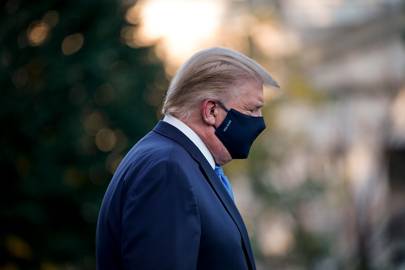Amazon Echo, the acclaimed voice-controlled AI device, is built on the technology of a little-known British company, Evi, which Amazon acquired in 2012.

The human (and Pixar characters) inside Google's Assistant
Formerly known as True Knowledge, Evi was founded in 2005 by AI aficionado and entrepreneur William Tunstall-Pedoe, who wanted to develop software that accurately interpreted questions and framed more natural, conversational answers.
When it reached the market in 2012, the technology, Evi 11, was positioned as a contender to Apple's Siri - although not by Tunstall-Pedoe, 47, who says he set out to build something new, not to compete. Now, 11 years after its inception, he can celebrate Evi's real-world impact. "These technologies are now good enough that they are able to create useful products that change lives and are used daily," he says.
Before Evi's invention, Tunstall-Pedoe, who lives in Cambridge, built his reputation as an AI mastermind and was known for programming computers to crack cryptic word puzzles. He also developed the Anagram Genius software that uses AI to turn words into anagrams. Author Dan Brown used the software to devise the anagrams in The Da Vinci Code. (Tunstall-Pedoe is credited in all 80 million copies sold.)
After three years at Amazon, Tunstall-Pedoe left to pursue other AI projects. He speaks to WIRED about where voice recognition is going - and what he'll do next.
WIRED: Before building Alexa, the AI that underpins Echo, you built an AI that could solve cryptic crosswords. How did this lead to Evi?
It sounds trivial in comparison, for the size of the problem, but solving cryptic crosswords is a classic AI problem in many ways. It's something computers find very hard, and it requires intelligence. In terms of world impact it's obviously very small, but I was very proud of the technology2. The origins of Evi are about a desire to apply these technical skills and understanding to much bigger problems that can affect the lives of billions of people. For instance, the way we operate computers, with buttons or custom interfaces or guessing keywords, for me is not the way that computers are going to work in the future. Surely the most natural way to operate a computer is just to ask it for what you want? That vision is what drove me to found Evi.
What is it that makes Evi competitive as a technology?
One of the big unsolved problems in AI is the ability to understand natural language. The reason search engines still largely work with keyword search, statistics and snippets of text is that the technology doesn't understand what's in a document. There's no deep understanding that comes from reading a document. We haven't solved that problem, but the knowledge that powers the Evi platform is a knowledge base of structured data, including common-sense knowledge, that's in a form computers can understand3. So it's not going to a collection of documents - it's not like a search engine.
The other thing that's pretty unique is its ability to reason with knowledge. So we can take a question that has never been asked before, find multiple facts in the knowledge base and chain them together, combining them to create new knowledge that's needed to answer. Our ability to exploit that knowledge base is where the power comes from. This results in many more of the user's questions being answerable than would otherwise be the case.
How do you predict this will change our reality?
In ten years, people will expect all technology to respond to voice. In every building and vehicle, a computer system will respond to spoken requests and control the technology. Light switches and other controls that we see today may still be present, but will just be the manual alternative. People will also take for granted instant access to all their private data and all human knowledge, just by asking. It's coming sooner than people might realise.
As our idea of intelligence changes and refines, surely the definition of AI will evolve too?
Basically, there is one object in the Universe that everybody acknowledges is intelligent, and that's the human brain. So we have one reference point for what intelligence is. Computers are built in a completely different way to brains, though there is quite a bit of work now trying to merge cognitive science and AI, looking at how neurons work and taking inspiration from that. A lot of the recent big advances in artificial intelligence, such as those in computer vision, have come from what's known as deep neural networks, which are inspired by the way the brain works.
So, mimicking the human brain should be AI's ultimate goal?
To be clear, there are things that computers can do way better than the brain can do. Nobody remotely challenges a computer's ability to do arithmetic better than a human. So it's not so much drawing level with the brain. It's about creating computer systems that surpass what people can do, for the benefit of people.
What's next for you?
AI is pushing the boundaries of what's possible with computers. I'm looking for the next really big thing, that will positively impact billions of people. That's where my focus is. I am keeping an open mind for exactly what that will be. I hope to settle into something new in a few months' time.
RECOMMENDED
It looks a lot like Amazon wants to hide Alexa inside your web router 
It looks a lot like Amazon wants to hide Alexa inside your web router
Amazon's funny Super Bowl ad only underlines Alexa's limitations 
Amazon's funny Super Bowl ad only underlines Alexa's limitations
Thursday briefing: Amazon accused of recording children without consent 
Thursday briefing: Amazon accused of recording children without consent
The rise of Alexa creates a dilemma for your open plan office 
The rise of Alexa creates a dilemma for your open plan office

Donald Trump’s second tweet on Friday, October 2 was memorable even by his standards. After months of dismissing the gravity of the Covid-19 outbreak, Trump had contracted it. A pudgy 74-year old male with a heart condition, the president is susceptible to the more acute symptoms of a virus that has taken one million lives globally. As news spread, so too did fear for his life – but there wasn’t really cause for concern, was there?
Not according to the official narrative. We’re “feeling good”, tweeted Melania, his wife, who was also infected. Sean Conley, Trump’s physician, said the president was fit to execute his duties “without disruption”. Later on Friday, in a brief video message, a tired-looking Trump announced that he was doing well. He was due to travel to the Walter Reed National Military Medical Center in Washington DC’s suburbs to be monitored further. It was a precautionary measure, we understood, because the symptoms were “mild”.
Despite its clear messaging, the video incited a frenzy of theories that this was another falsehood. With the election looming, perhaps it was a ploy to reboot a news cycle filled with stories about his failure to pay taxes. Or was he instead masking the severity of his condition? Some people falsely claimed they saw an oxygen tank when Trump left the White House on Friday, and others speculated that he’d even employed a body double to stage his recent public appearances.
Since then, opacity and contradiction in official reports has fuelled a storm of confusion over Trump’s wellbeing. At the same time, more than 34 people connected to the White House, several of whom attended the Rose Garden ceremony there on September 26, have also tested positive.
Besides withholding key pieces of information, such as the “expected findings” on the president’s lungs, Trump’s aides have presented a maelstrom of proclamations that manufacture a mixed image of his true condition, while his doctors have become puppeteers in the facade. “It’s all about projecting a certain image,” says Rajnandini Pillai, professor of management at California State University, San Marcos. “He’s always sold himself as messianic, and by projecting strength he can minimise cognitive dissonance among his followers.”
The confusion began on Saturday afternoon. White House chief of staff Mark Meadows revealed Trump had been through a “very concerning” period and that the next 48 hours would be “critical”. It was a stark contrast to Conley, who just moments earlier said he was "extremely happy" with Trump’s progress. Meadows would swiftly change his messaging, later telling Reuters that Trump was doing "very well”. The president was reportedly outraged with the initial statement.
Central to the commotion is Trump’s supposed dependence on supplemental oxygen, which Conley’s team fervently refused to confirm at a Saturday briefing. “Thursday no oxygen. None at this moment. And yesterday with the team, while we were all here, he was not on oxygen,” Conley bumbled. Yet the following day, someone familiar with Trump's condition told the Associated Press that the president had been administered oxygen on Friday, before he was transported to hospital.
It’s all part of a language designed to direct attention away from what they are not saying, says Kathleen Hall Jamieson, a professor of communication at the University of Pennsylvania. “So when they say he is not on oxygen in the briefings, that’s not the relevant question. The question is was he ever on oxygen, and if so when, and how much, and why?”
There’s also confusion about how long the White House has known of Trump’s infection. The official line is from last Thursday evening, but on Saturday Conley said the president's diagnosis came “72 hours ago”, meaning Wednesday. Officials dismissed it as an error, but the apparent speed of Trump’s decline would indicate that he contracted the virus much earlier, according to external medical experts. Trump’s doctors continue to avoid the question.
For these reasons, a video message from Trump on Saturday was keenly scrutinised. Speaking from his hospital ward, he claimed to be “feeling much better”, but this actually fuelled speculation over his well-being. Besides concern in Trump’s choice of words, body language expert Judi James told Mirror Online that she identified “undeniable and very natural signs of weakness and hesitancy”. During the address, his head seems to sink towards the desk.
White House officials may have inexpertly edited the video to conceal symptoms of the virus. The theory hangs on a peculiar moment when Trump pauses mid-sentence to begin what would appear to be a cough. “Clearly a cut here”, wrote viewer Chris Evans, suggesting the White House had used the “morph cut” feature on Adobe Premiere. Other theories were that Trump was just spasming because of the virus, or that he’d filmed the video before he was hospitalised. Officials have not commented on the video.
The White House propaganda also included a selection of photos supposedly showing Trump hard at work in various positions around his hospital suite. He even wore different outfits. But according to corresponding metadata, the photos had all been taken between 5.25pm and 5.35pm Eastern Time, which suggests they’d been staged to create the impression of the president’s continued vigour. One photo shows Trump signing a blank piece of paper.
“These produced realities create false impressions that direct attention away from the more relevant questions,” Jamieson says. “Because the productions would suggest that he’s fine, we are less likely to focus on the severity of his illness and the side-effects of his treatment. So we don't ask whether he is competent to lead.”
Was Tuesday night’s Twitter barrage, a two-hour spree that saw him declassify all documents relating to the probe into his campaign’s ties to Russia, a function of his euphoria caused by his treatments?
Jamieson likens this debacle to the 1960 John Kennedy campaign when, to deflect attention from the fact that he had Addison’s disease which is treated by mood-altering steroids, the team sought to emphasise his heroism. To do this, they turned to the sinking of PT-109 during the Second World War, when Kennedy, the boat’s skipper, led 11 shipmates to safety. They printed booklets retelling the story and posted them to thousands of homes across the country.
At Sunday’s briefing, the game was up and Conley’s team needed to give something. Trump, we learned, had been given oxygen on Friday, and his oxygen saturation levels dropped suddenly for a second time the next day. Conley confessed to deceiving reporters to "reflect the upbeat attitude” of the team, but dismissed Meadows' earlier statements. Yet despite a slight budge, the strategy remained clear.
The medical team remained coy on any details that would allow for an accurate external prognosis of Trump’s condition. They refused to disclose how low his blood oxygen levels had dropped. Much to the dismay of external medical professionals, Conley even suggested that Trump might be strong enough for discharge the following day, even though he was in the midst of a course of dexamethasone, a steroid reserved for critical cases of Covid-19 because it takes a broad approach to suppressing the immune system. Hours later, Trump surprised fans at the hospital gates with a drive-by, risking transmission to his security team.
Appearing strong, Jamieson adds, is integral to Trump’s presidential campaign. Whereas Joe Biden, his rival, presents himself as a steady leader, Trump is all about appearing superhuman. “To the extent that someone is hospitalised by the virus, the person looks weak,” Jamieson explains, “so Trump has to distract attention from the weakness associated with becoming ill by performing exhibitions of strength”. Now that he’s become infected, instead of telling you you’re not going to get it, which is what he was saying with his past behaviour, the message is you can conquer it, she says.
Revelations into Trump’s condition also puncture the fabricated reality on which he’s built his candidacy. Despite medical and scientific advice to the contrary, the president has consistently downplayed the severity of the virus. Ninety-nine per cent of cases are “totally harmless,” he said in July, and the virus affects “virtually nobody,” he suggested in September, just as the US passed 200,000 Covid-19 deaths. Hours before he announced the diagnosis, he said that the end of the pandemic was in sight.
“His political future depends on masking his mismanagement of a pandemic,” says Graham Brookie, a director of the Atlantic Council's Digital Forensic Research Lab, and a former adviser for strategic communications at the White House. “But his diagnosis proves in the most visceral way that the threat of this virus is real”. Acknowledgement of this would also undermine another cornerstone of his campaign strategy, namely to minimise the number of qualified mail-in votes. Part of the reason that 80 million Americans are expected to vote by mail this year is because of public health guidelines to avoid large gatherings, like polling stations on Election Day, Brookie says.
The White House’s conduct surrounding Trump’s diagnosis is archetypal of a wider presidential strategy that disseminates an abundance of inaccurate and deceptive information in the pursuit of power. A recent study conducted by Cornell University, which analysed 38 million English-language articles about the pandemic, identified Trump as the single largest driver of misinformation across traditional and online media. The president’s disseminations have become integral in what author and expert on disinformation Nina Schick labels the “infocalypse,” an age marred by a corrupt and untrustworthy information ecosystem.
The approach that Trump employs to communicate in this ecosystem, when modern tools allow him to reach a global audience with ubiquity, is called “censorship through noise”. Historically it is a misinformation tactic whereby you flood the zone with enough information to confuse the public as to what’s real. “He puts so much out there, including bad information, that the trust in all information dwindles,” Schick explains. “And so even though we have this abundance of information, we are not actually more enlightened. It’s like we’re back in the dark ages.”
This backdrop of bewilderment makes it that much easier for Trump to manipulate what the media covers – he left the hospital and arranged his drive-by just before the evening news. Confusion also provides a petri-dish for disinformation, and by being loud, Trump can then shape the news according to a particular narrative. The story moved on very quickly from his unpaid taxes, Schick points out. In this case, it’s about appearing messianic for the good of the election, but next month it could be something else.
Upon leaving hospital on Monday, sporting a navy business suit, tie, and a mask, Trump continued to downplay the virus’ severity. “Feeling good”, he’d tweeted earlier. “Don't be afraid of Covid...I feel better than I did 20 years ago.” On Wednesday, he described his experience with the virus as a blessing from God. And Thursday, there was speculation about his coughing during an interview. “When truth no longer matters, information becomes a mere tool to push an agenda,” Schick says.


